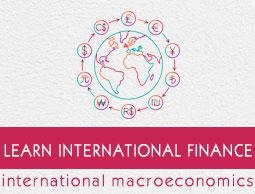International Money Market
A money market is one of the safest financial markets available for currency transactions. It is often used by the big financial institutions, large corporations, and national governments. The investments made in money markets are usually for a very short period of time and therefore they are commonly known as cash investments.
The International Money Market
The international money market is a market where international currency transactions between numerous central banks of countries are carried on. The transactions are mainly carried out using gold or in US dollar as a base. The basic operations of the international money market include the money borrowed or lent by the governments or the large financial institutions.
The international money market is governed by the transnational monetary transaction policies of various nations’ currencies. The international money market’s major responsibility is to handle the currency trading between the countries. This process of trading a country’s currency with another one is also known as forex trading.
Unlike share markets, the international money market sees very large funds transfer. The players of the market are not individuals; they are very big financial institutions. The international money market investments are less risky and consequently, the returns obtained from the investments are less too. The best and most popular investment method in the international money market is via money market mutual funds or treasury bills.
Note − The international money market handles huge sums of international currency trading on a daily basis. The Bank for International Settlements has revealed that the daily turnover of a traditional exchange market is about $1880 billion.
Some of the major international money market participants are −
- Citigroup
- Deutsche Bank
- HSBC
- Barclays Capital
- UBS AG
- Royal Bank of Scotland
- Bank of America
- Goldman Sachs
- Merrill Lynch
- JP Morgan Chase
The international money market keeps track of the exchange rates between currency- pairs on a regular basis. Currency bands, fixed exchange rate, exchange rate regime, linked exchange rates, and floating exchange rates are the common indices that govern the international money market in a subtle manner.
The International Monetary Market
The International Monetary Market (IMM) was formed in December 1971 and was established in May 1972. The roots of IMM can be linked to the finish of Bretton Woods via the 1971 Smithsonian Agreement and then, Nixon's abolition of US dollar's convertibility to gold.
The IMM was formed as a separate entity of the Chicago Mercantile Exchange (CME). By the end of 2009, IMM was the second biggest futures exchange in terms of currency volume in the world. The major purpose of the IMM is to trade currency futures. It is comparatively a new product which was earlier studied by the academics as a tool to operate a freely-traded exchange market to initiate trade among the nations.
The first futures transactions included trades of currencies against the US dollar, such as the British Pound, Swiss Franc, German Deutschmark, Canadian Dollar, Japanese Yen, and the French Franc. The Australian Dollar, the Euro, emerging market currencies such as the Russian Ruble, Brazilian Real, Turkish Lira, Hungarian Forint, Polish Zloty, Mexican Peso, and South African Rand were later introduced as well.
The Drawbacks of Currency Futures
The challenge of the IMM was in connecting the values of IMM foreign exchange contracts to the interbank market, which is the prominent means of currency trading in the 1970s. The other aspect was how to allow the IMM to become the best and a free-floating exchange.
To contain these aspects, clearing member-firms were allowed to act as the arbitrageurs between central banks and the IMM to allow orderly markets between the bid and ask spreads.
Later on, the Continental Bank of Chicago was incorporated as a delivery agent for contracts. These initial successes led to fierce competition for new futures products.
The Chicago Board Options Exchange was a competitor. It had received the right to trade US 30-year bond futures while the IMM obtained the official right to trade Eurodollar contracts. The Eurodollars were a 90-day interest rate contract settled in cash and not in any physical delivery.
Eurodollars later became the "Eurocurrency Market," which were mainly used by the Organization for Petroleum Exporting Countries (OPEC). OPEC required payment for oil in US dollars.
This cash settlement aspect later introduced index futures known as IMM Index. Cash settlements also allowed the IMM to later known as a "cash market" because the trades were interest rate sensitive instruments of short-term.
A System for Transactions
As competition grew, a transaction-system to handle the transactions in IMM was required. The CME and Reuters Holdings introduced Post Market Trade (PMT) for worldwide electronic automated transactions. The system became the single clearing entity to link the major financial centres like Tokyo and London.
Now, PMT is called Globex, which deals not only in clearing but also in electronic trading for traders around the world. In 1976, US T-bills began trading on the IMM. T-bill futures were introduced in April 1986 that was approved by the Commodities Futures Trading Commission.
Financial Crises and Liquidity
In financial crises, central banks need to provide liquidity to stabilize markets, as risks may trade at premiums (money rates) to a bank's target rates. Central bankers then need to infuse liquidity to the banks that trade and control rates. These are known as repo rates, and these are traded via IMM.
Repo markets allow the participating banks to offer rapid refinancing in the interbank market that is independent of any credit limits to smoothen the market.
A borrower has to pledge for securitized assets, such as equity, in exchange for cash to allow its operations to continue.


